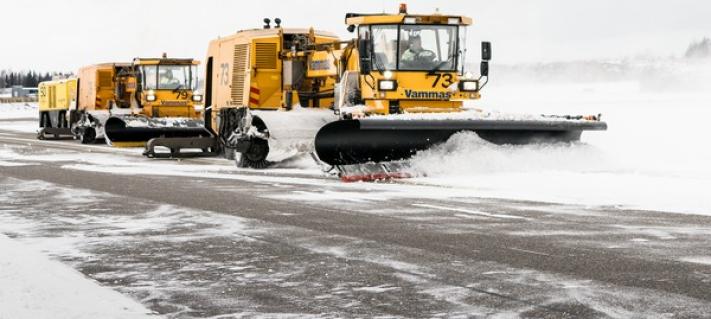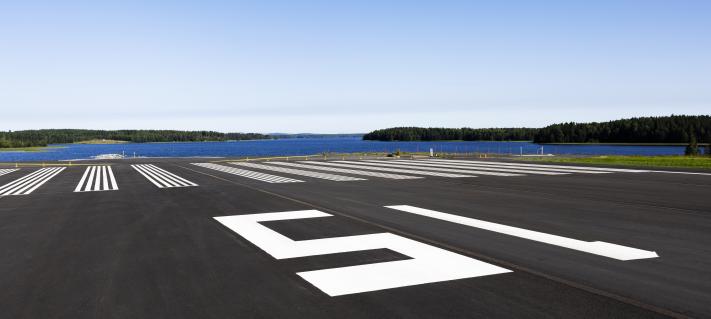Aircraft noise is generated by the engines of the aircraft and the air flowing around the aircraft’s body. Noise levels can vary depending on the type of aircraft, speed, altitude and direction of flight, as well as ambient conditions such as wind and temperature.
“Aircraft noise is divided into engine and aerodynamic noise. The level of engine noise is affected by the type of engine and the power setting being used. The level of aerodynamic noise is affected by the type of aircraft, the flight configuration according to the phase of the flight, such as the position of the landing gear and wing flaps, and the flight speed,” says Ari Pietilä, Head of Aircraft Noise Management at Finavia’s Environmental Unit.
According to Pietilä, engine noise is very significant during take-off, but the share of aerodynamic noise increases during landing.
Noise management is carried out in a variety of ways
Runway use choices and the planning of take-off routes, as well as noise restrictions concerning the use of runways or routes, are among the most important means of noise management.
Finavia is also working with air traffic control to design low-noise flight procedures for take-offs and landings. Airlines are responsible for the practical implementation of the flight procedures. Land use planning also has an important role to play, so that new residential areas are not built in aircraft noise areas.
Aircraft noise has gradually decreased as international technical regulations have become stricter. This means that the upgrading of airlines’ fleets is a significant factor when it comes to aircraft noise. Flight procedures have also evolved in terms of noise and fuel efficiency.
All of Finavia’s operations are first and foremost guided by the need to ensure aviation safety. This means that safety is also the top priority in noise management.
“Air traffic control directs air traffic under these conditions and on the basis of capacity and smooth flow of traffic, with the aim of minimising the number of people in the area affected by aircraft noise. The take-off routes have been designed together with Fintraffic to avoid densely populated areas as much as possible. For landings, the route is determined by the direction of the runway.”
“The most significant factor that varies daily is wind speed and direction. Planes always try to land and take off into the wind. This is why the use of runways varies, and the optimal method for noise management cannot always be followed,” Pietilä says.
We often hear about the continuous descent approach. What does it mean?
“The continuous descent approach means that the aircraft approaches the airport in such a way that the aircraft steadily decreases altitude as it descends. In an optimal situation, the aircraft descends from cruising altitude to the runway in one smooth motion. Using the approach reduces emissions and noise from a distance of about 10–20 km from the runway, so it is utilised as much as possible.”
You can track Helsinki Airport’s noise data in the WebTrak service
Flight routes, runway use, times of day, noise levels, aircraft types and many other details are regularly reported in accordance with the airport’s environmental permit.
The most important tool for this is the ANOMS (Airport Noise and Operations Monitoring System), which is the only continuous monitoring system for urban noise in Finland. It links the data from the ten continuous noise meters located in different parts of Uusimaa with radar data.
“Aircraft routes and the noise data from the noise measurement stations are also available in the public WebTrak service. It is an application that allows interested parties to search for Helsinki Airport’s flight and noise events. In the Helsinki Metropolitan Area, it is possible to view information up to a distance of approximately 70 kilometres from Helsinki Airport.”
The most common indicator of aircraft noise level in Finland is the Lden, which is the noise level weighted according to the time of day.
“The area affected by aircraft noise is estimated using calculation models and it describes the distribution of noise among different areas over a long period of time, usually within one year. It does not describe the situation during a single day or time of day,” Pietilä says.
Aircraft noise areas are those in which the Lden is more than 55 dB. In the annual aircraft noise calculation, noise is weighted in the evenings between 7 p.m. and 10 p.m. and at night between 10 p.m. and 7 a.m. with separate factors. Finavia reports aircraft noise areas annually.
Further reading
Video: Use of runways and noise management at Helsinki Airport



